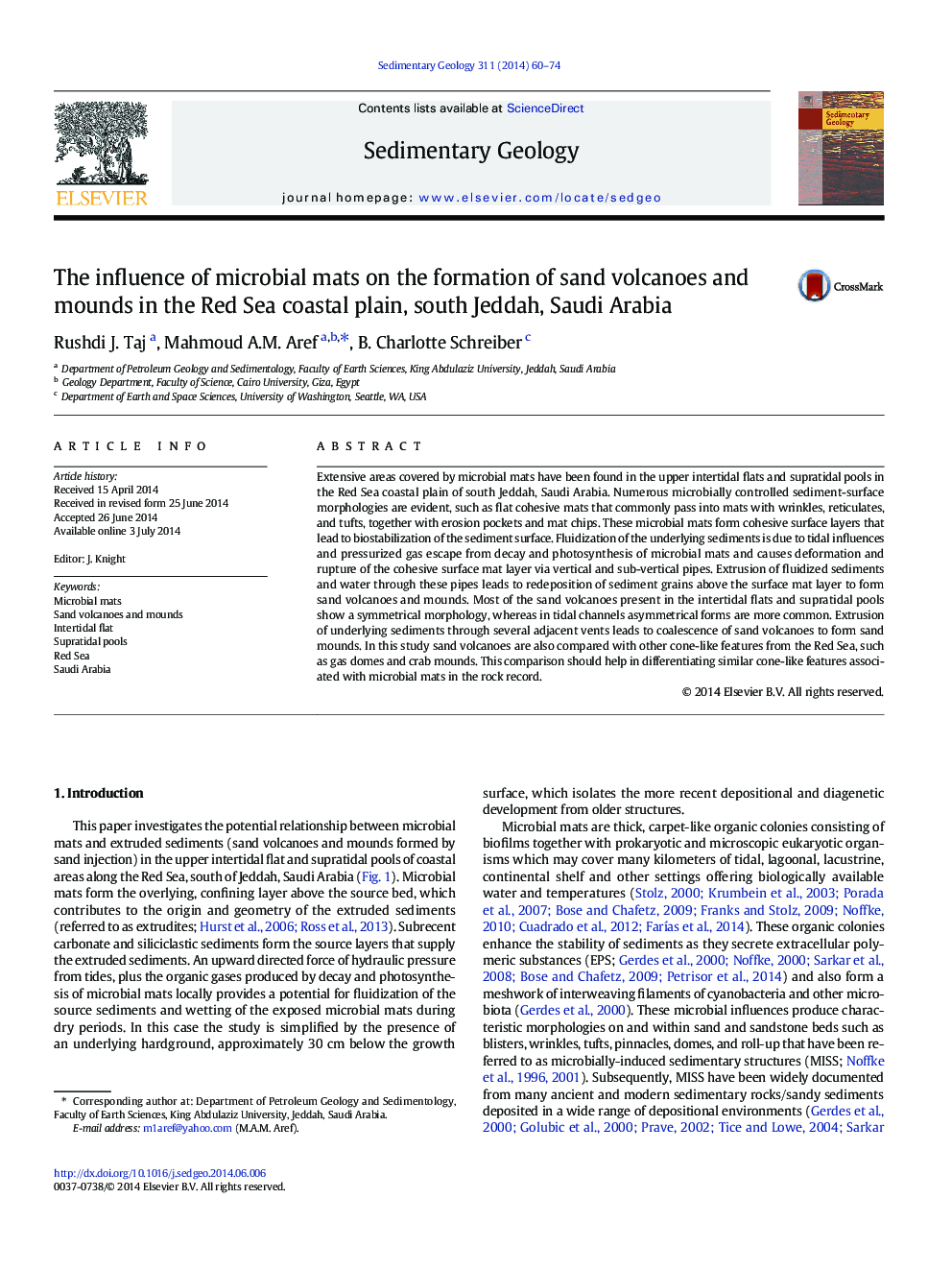| Article ID | Journal | Published Year | Pages | File Type |
|---|---|---|---|---|
| 4689346 | Sedimentary Geology | 2014 | 15 Pages |
Abstract
Extensive areas covered by microbial mats have been found in the upper intertidal flats and supratidal pools in the Red Sea coastal plain of south Jeddah, Saudi Arabia. Numerous microbially controlled sediment-surface morphologies are evident, such as flat cohesive mats that commonly pass into mats with wrinkles, reticulates, and tufts, together with erosion pockets and mat chips. These microbial mats form cohesive surface layers that lead to biostabilization of the sediment surface. Fluidization of the underlying sediments is due to tidal influences and pressurized gas escape from decay and photosynthesis of microbial mats and causes deformation and rupture of the cohesive surface mat layer via vertical and sub-vertical pipes. Extrusion of fluidized sediments and water through these pipes leads to redeposition of sediment grains above the surface mat layer to form sand volcanoes and mounds. Most of the sand volcanoes present in the intertidal flats and supratidal pools show a symmetrical morphology, whereas in tidal channels asymmetrical forms are more common. Extrusion of underlying sediments through several adjacent vents leads to coalescence of sand volcanoes to form sand mounds. In this study sand volcanoes are also compared with other cone-like features from the Red Sea, such as gas domes and crab mounds. This comparison should help in differentiating similar cone-like features associated with microbial mats in the rock record.
Related Topics
Physical Sciences and Engineering
Earth and Planetary Sciences
Earth-Surface Processes
Authors
Rushdi J. Taj, Mahmoud A.M. Aref, B. Charlotte Schreiber,
